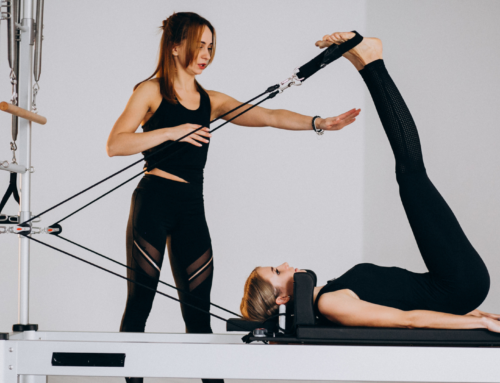If you have had achilles pain, you know how annoying it can be when you are trying to go for a run or play sports. It may not be excruciating but it’s irritating enough to stop you from running or jumoing right? Now, although the achilles tendon is the strongest in the body, when it’s inflammed it can make even walking quite difficult. This is also called achilles tendinopathy. Here are top 5 exercises that will help you recover in addition to some good old hands on physiotherapy.

1. Isometric holds are good to reduce achilles pain
It is important to start this exercise on both feet initially. So basically it’s like a calf raise if you are a gym goer. You have to go up on your toes and hold that position for a count of 5 to start with. Now you must remember that the range of the movement is dependent on the level of discomfort. So stop as soon as you start to feel any discomfort and hold that position. You can repeat the exercise 3-4 times per day and do 5 repeptitions at a time.
2.seated calf raises to get rid of achilles pain
Soleus is a deeper calf muscles that needs to be strengthen in order to treat achilles pain. This muscle can be exercised in the seated positon with the knee bent. So what you have to do is sit with your knees bent and simply raise the feet on your toes. Now if you are doing it in a gym, some gyms do have the seated calf raise machine. Make sure that you are starting without any weight plates and then slowly build up your resistance. Again, the simplest way to start with is a hold for 5 seconds and repeat 5 times, 3 times a day.
3. Standing calf raise
This one is quite an easy exercise as you are mainly using your body weight to start with. Basically you go up on your toes as far as the achilles pain allows you to. It shouldn’t be excriciating. You should only be feeling some discomfort at this stage. If you are comfortable with the full range of the movement, great! If not, stop at the point it starts to get uncomfortable. Then hold for 5 seconds and slowly lower yourself down. Repeat this again and test how many times you can actually do the raises before you start getting achilles pain. Assess your limit and don’t push beyond that yet.
4. Progress to calf stretch and then raise to strengthen achilles
Now this exercise is a progression to the previous exercises and can only be attempted if there is no pain while doing it. In this case you are standing with your toes on the edge of a step and gently lowering yourself down. Can you feel the calf muscle stretch? Good! Now slowly do a calf raise from that stretched position. The important thing is to keep the movement slow and intentional. This is a great exercise to strengthen the achilles tendon.
5. Finally single leg exercises and plyometrics help achilles pain
If you are looking to get back into sports, this is the last part of your recovery. This is where we use various exercises like hopping, skipping and jumping to ensure that the achilles tendon is strong enough to withstand the pressure. It is important that these exercises are done under the supervision of a physiotherapist so they can customise the exercise for you and treat immediately if necessary.
It is important to remember that all these exercises are part of a physio recovery program and must not be done otherwise. Physios are really the best people to treat achilles pain and ensure that it does not reoccur.






